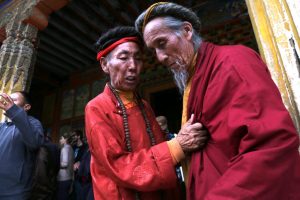
The Yogi Village
Landing at Xining airport was an amazing experience. Our plane cut through a thick roof of white clouds which covered this ancient centre of trade between the Chinese empire and the central kingdom of Tibet, before we caught our first glance at the huge skyline of the city. From our perspective it seemed like an abstract miniature town, with little toy cars rushing around on huge lanes and small streets forming a tremendous web of moving particles in between nearly endless rows of identical looking skyscrapers who were passing by our airplane windows closer and closer.
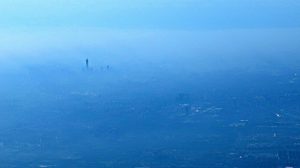
Flying over Beijing showed us the smog that covered it’s centre.
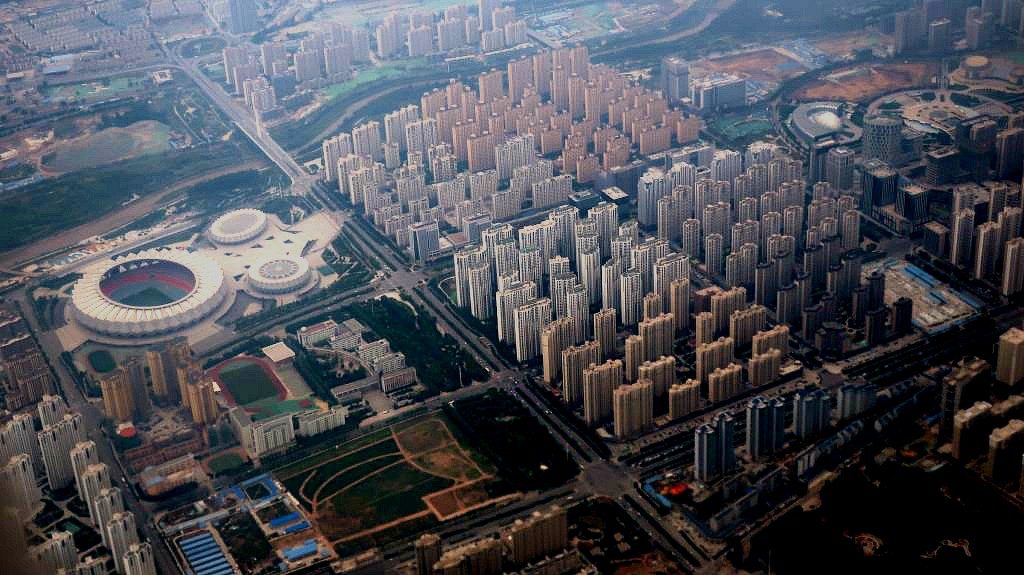
A short glimpse at Xining from our plane.
Together with Andreas, a very skilled psychotherapist and psychiatrist from Germany, we got picked up by Abe, one of our tour guides which got the nickname “Tibetan Biber” by the other guides – thanks to his passion towards a well-known young western pop artist. Our hotel was situated in the middle of this beton and glass garden. But was it really the middle? Everywhere it looked the same to us. And actually there was no real down town or any old city parts since the original one was destroyed during the cultural revolution of the past century. According to Abe all these tall buildings we were facing were constructed within the last 10 to 15 years and the Chinese engineers are continuing to ride on the top of the wave of Chinas economic expansion in Tibet and plant many new “steel trees” in and around Xining.
In our Hotel we met a lot of other familiar faces but also many people we did not know before, who joined this year’s Sorig Medical Tours (Sorig is an abreviaton for Sowa Rigpa which is the Tibetan term for its Traditional Medicine. Other meanings are “Science of Healing” and “Nourishment of Consciousness”). The biggest group was the delegation from Italy, others came from Spain, USA, Russia, Poland, Hong Kong, Australia and the UK. All these great people would give us a great time in the following weeks through their great humor (and I don’t only mean it in a Sorig context 😉 ), their knowledge of Sowa Rigpa and spirituality as well as their singing skills.
Sorig Tours was established around 8 years ago by Dr. Nida Chenagtsang and Drukmo Gyal to enable students of Sowa Rigpa, especially from the west, to experience the culture and the nature where this unique kind of medicine was developed and dwelling – probably since thousands of years. Otherwise without the profound knowledge and widespread connections of both of them it would not have been possible for foreigners to dive so deep into the Tibetan environment and daily lives of the people.
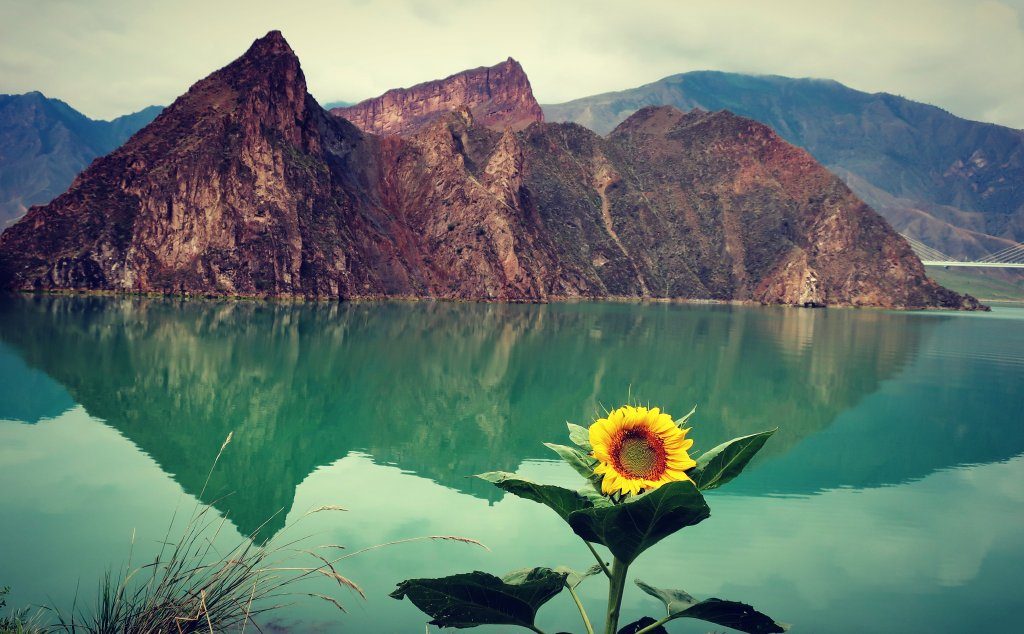
It took us about two hours drive through deep valleys, long tunnels and over bridges crossing the Yellow River to reach the very first highlight of the tour: The town of Rebgong and it’s big Buddhist monastery with the typical golden rooftops. However the stop was very short and soon after our arrival we hopped on the bus again to take one small unpaved road straight up into the mountains. As we slowly lost sight of Rebkong behind us all of a sudden we found ourselves on a plateau high above the town. In front of us was a little village that spread out from one side to the other, most of the one storey high family houses were built from clay and some of them were painted white – the Yogi village of Rebgong. The buildings naturally matched the harmony of the plateau and it seemed to me that they grew naturally into the landscape within centuries. They were built upon the backs of small hills or were hidden in between them and the bright golden barley fields. As we approached the centre of the village called Rigzin Rabpel Ling with its prominent Ngakpa- Yogi temple, we saw that more and more people gathered to welcome us and the special guest who brought us there. The faces and the clothes of the people drastically changed in comparison to the masses of Han-Chinese we still saw in Xining. The Tibetans of Amdo often had thinner shaped faces, bigger eyes and a darker sun tainted skin as well as broader shoulders and a generally stronger physique. The elderly among them preferred traditional clothes while younger generations already had western types of dresses (made in China).
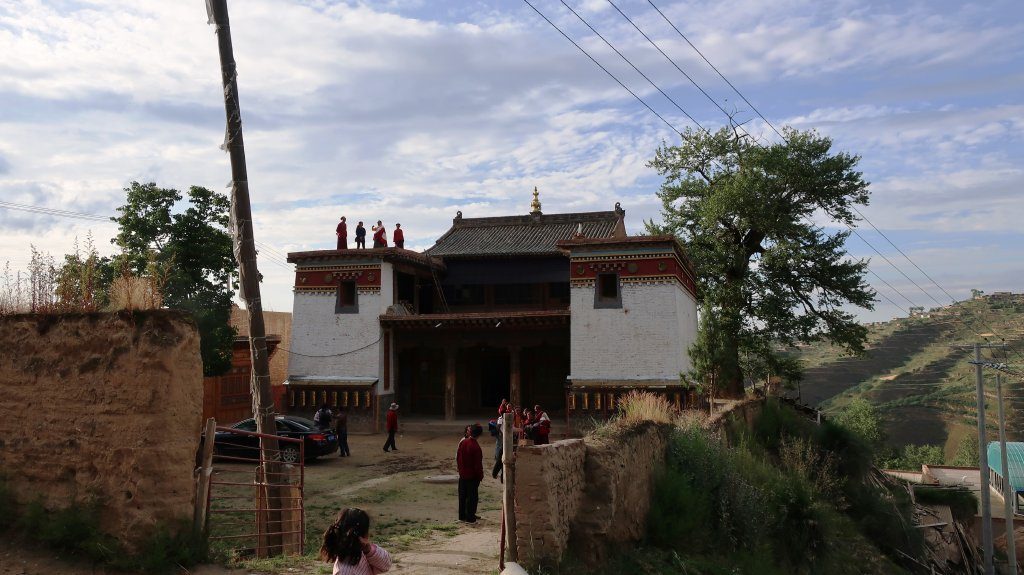
The Yogi Temple of Rigzin Rabpel Ling.
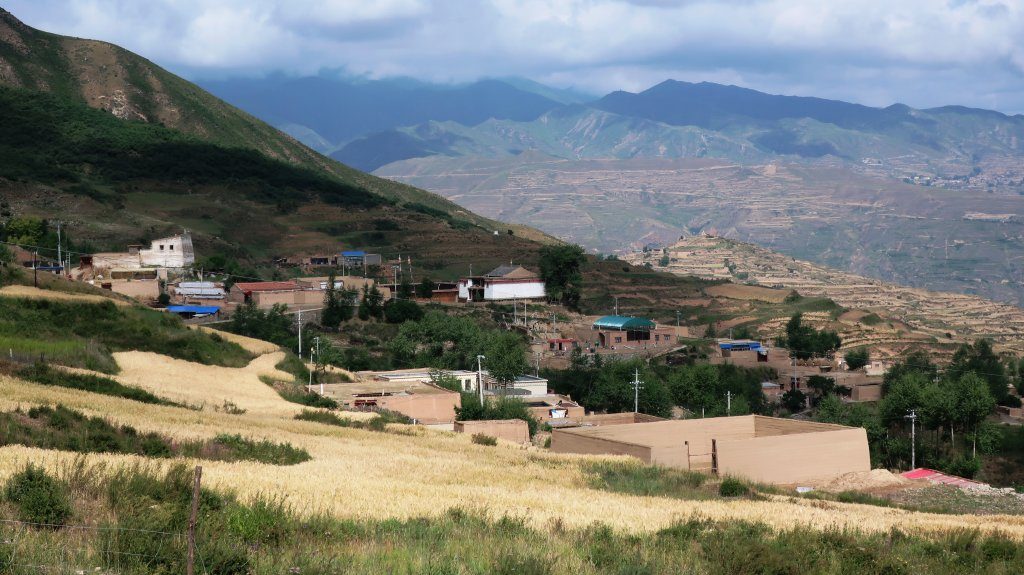
The White Sangha
The Ngakpas (“nak-pa“) (and their female counterparts, the Ngakmas), an ancient culture of non-monastic and non-celibate Buddhist Yogi, wore a mixture of casual dresses and white to wine-red monk robes and were easy to identify from far away. Their unique rituals and lifestyle were still authentically preserved and cultivated and as alive today as they were many centuries ago.
[read more=”Click here to Read More” less=”Read Less”]
The Ngakpa tradition is rooted in the so called “White Sangha” which was founded by Padmasambhava (tib. Guru Rinpoche) in the 8th century. He was called upon by the Tibetan king Trisong Detsan from far India to establish Buddhism in Tibet and he was clever enough to include many of the shamanic rituals and other features of the aboriginal Bön traditions into the new Tibetan Buddhism and made it therefore as unique as we know it today. While classic Buddhist monastic monks had to take their special vows, study many years in monasteries and are mainly involved in intellectual debates, the Ngakpas concentrate on the practice of the ancient Bön-rooted rituals and ceremonies which are now deeply entangled in Tibetan Buddhist liturgy. Additionally, and this is considered the biggest difference to the typical monks, Ngakpas are involved in a casual live including marriage and family life, house- and fieldwork as well as all the other challenges they have to face in a normal “every day- life”.
[/read]
Many people highly respect the Yogi for their very effective shaman-like healing rituals and Pujas (spiritual cleanings) and often consult them if they suffer from diseases, from bad energies or black magic (so called “provocations”) or if they desire spiritual guidance as well as blessings. The Ngakpas have been so effective and trained through the hardships of their casual life and their continuous practice that there have been even several occasions were the envious scholastic monks even tried to discriminate them against and to drag more people and their precious donations back into their own monasteries.
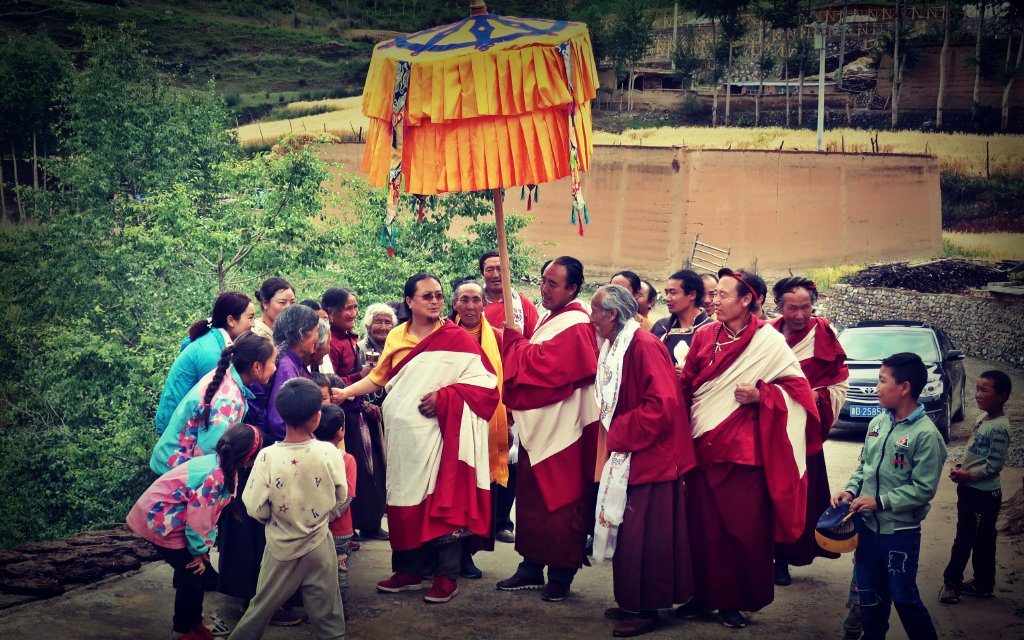
Our Sowa Rigpa teacher Dr. Nida Chenagtsang is considered a so called “Tulku”, a reincarnation of an important person in history. The Ngakpas of Rigzin Rabpel Ling and about 30 other villages in the area see in him the 5th reincarnation of Rigzin Palden Tashi (1688-1743) – the old Ngakpa king, bringer of the old Ngakpa tradition, founder of the temple and previous heart disciple of famous Guru Rinpoche. Thus all the Ngakpas came together to welcome Dr. Nida with greatest respect and to celebrate the return of their old friend, supporter and holder of good fortune. We all were invited into the temple and the smiling Yogis served us tables full of Yak butter tea, Tsampa, different fruits, bread and their joyful hospitality. Shortly after we finished our meals and Dr. Nida took place in his seat above our heads the yogis sat down next to us and began to chant holy Mantras. The Yogi continued to recite different powerful prayers to bless and strengthen us and to support our whole group with the protection of their deities. The ceremony was rounded up by an amazing final teaching from Dr. Nida about the practice of Ati-Yoga (tib. “Dzogchen”, “Great Perfection”).
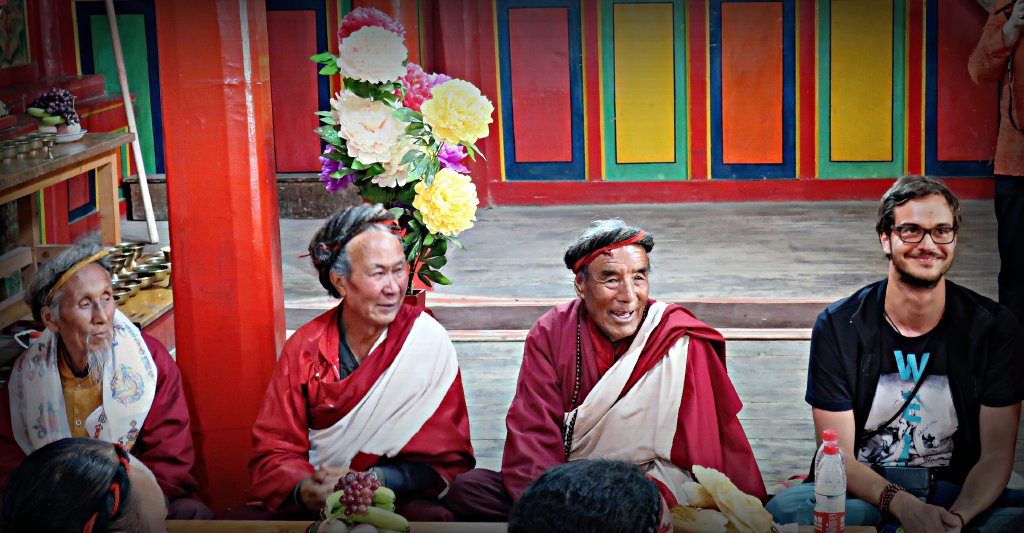
First medical consultations
Immediately after the celebration has finished we were surprised by our first medical interventions and had to open some kind of first aid medical post in front of the temple entrance with our improvised medical travel bag.
[read more=”Click here to Read More” less=”Read Less”]
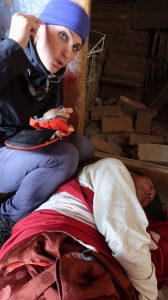 Some of the older Ngakpas had problems especially with their ears like deafness or tinnitus and even though we had no otoscope or other suitable instruments but only a flashlight and a forceps, we were able to remove a huge amount of cerumen out of Yogi-ears. These actually pretty simple interventions caused a lot of relieved faces and we were able to send our first patients back home with our recommendation not to tell their wives that they can hear well again! 🙂
Some of the older Ngakpas had problems especially with their ears like deafness or tinnitus and even though we had no otoscope or other suitable instruments but only a flashlight and a forceps, we were able to remove a huge amount of cerumen out of Yogi-ears. These actually pretty simple interventions caused a lot of relieved faces and we were able to send our first patients back home with our recommendation not to tell their wives that they can hear well again! 🙂
Some other cases were more complex: One man complained about strong outbursts of anger and that very often he feels the urge to beat his wife. Fortunately until now he did not harm anyone but he was suffering very much under his emotional instability. In the west we would prescribe him certain mild neuroleptics to stabilize his mood and enable further psychotherapeutic treatments. Here in this remote village however we needed to take advantage of the local possibilities: According to Sowa Rigpa a change in diet (i.e. avoid spicy things, alcoholic baverages or certain meats which increase heat in the body and ultimately elevate the emotion of anger) and lifestyle (i.e. sleep >7-8h per night, avoid too much heat like direct 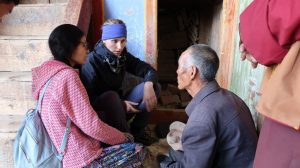 sunlight especially at noon, relax more in cool places, etc.) would be the basement for further treatment. The next step would be the practice of Buddhist compassion and the recitation of Buddhist mantras which would act as a culturally fitting form of psychotherapy. Positively surprised by such therapeutic advices from a white westerner the man left full of motivation and started counting on his Mala.
sunlight especially at noon, relax more in cool places, etc.) would be the basement for further treatment. The next step would be the practice of Buddhist compassion and the recitation of Buddhist mantras which would act as a culturally fitting form of psychotherapy. Positively surprised by such therapeutic advices from a white westerner the man left full of motivation and started counting on his Mala.
A more unfortunate case was a little girl who suffered from the effects of a postnatal brain damage probably caused by liver dysfunction and too high Bilirubin levels. Even though she was already 3 years old she had the body of an 8 month old baby. Her fontanelles were all closed and she had hemiplegia on the left side as well as spastic upper and lower limbs to the right. We did not find any signs of liver problems such as jaundice or a increase in liver size. As far as we could evaluate with our hard working translators the Chinese Doctors diagnosed the liver damage in the beginning but except for a short period of UV-stimulation
possible in different other ways. Regular use of warm oil which should be gently rubbed onto her limbs together with soft mobilisation of all her joints should help her to develop her nerves as much as possible. Dr. Nida added a few Tibetan medical pills like “Pearl 70” and “3 Ministers” in a child adapted dosage which show good effects in neurological disorders. Also moxibustion and Horme- massages could help the small girl to elevate nerve growth.
Otherwise we met a whole bunch of other patients i.e. with arthrosis of different joints as well as chronic arthritis which was very common among people of this region (you will read more about it in a later article) or other mostly infectious diseases or gastrointestinal issues.
[/read]
This amazing first day with Sorig Tours in the Yogis village ended with us staying overnight at the Hao Mam Jil family house on the top edge of the village together with our other group member Andreas. The family mother and father, also a Ngakpa Yogi, prepared delicious Yak meat and vegetarian momos on their open fire place in the kitchen. In the meantime the grandmother of the family received a medical consultation for her headache and dizziness from us resulting in a very interesting psychotherapeutic intervention by Andreas which showed an immediate very good result. Since in Tibet it is usual that the guests eat first and the hosts start eating after them the Hao Mam Jil family had to wait quite a while because their Momos were just too delicious!
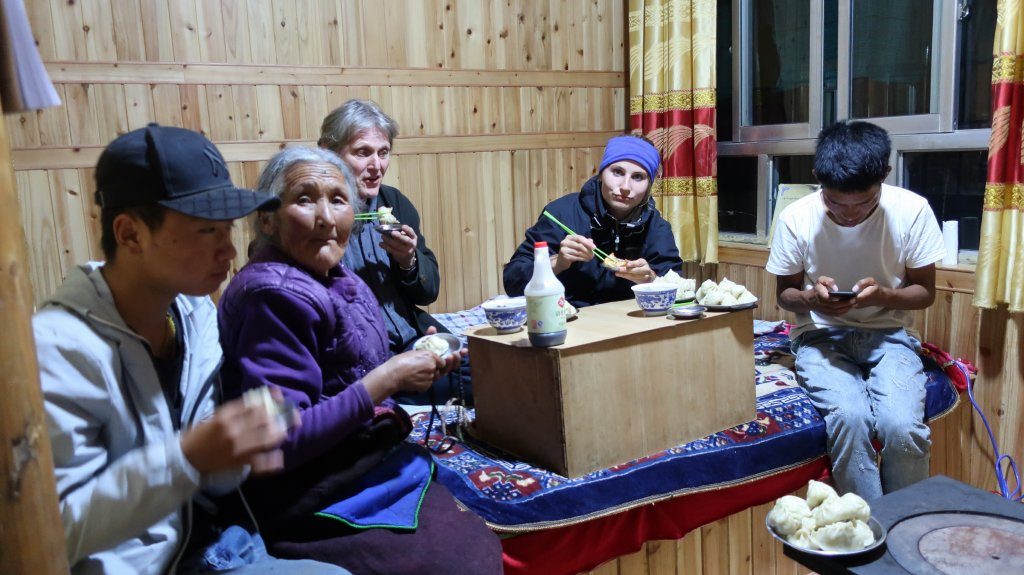
For more pictures visit the corresponding gallery!
Have a look at our hike to the mountain retreat cave the next morning!

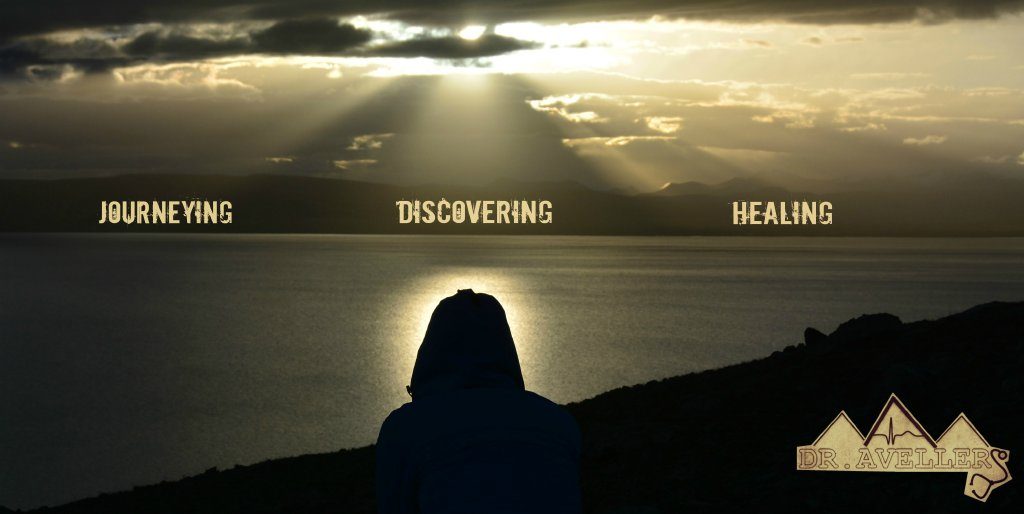
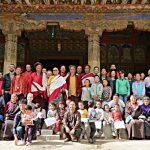
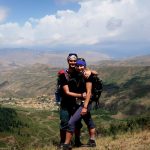
Isa your English is very perfect! Nice article, hope you enjoy your tibetian-medical journey:-) many greetings from Wienna